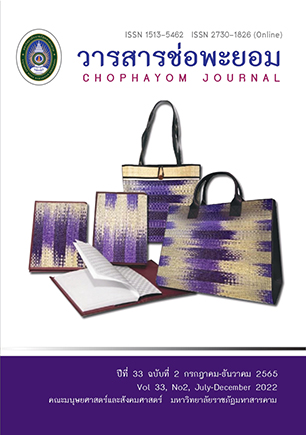The Analysis of Grammatical Functions and Semantic Aspects of Antonyms“反而”and“相反”in Chinese
Keywords:
Analysist, antonym, Chinese grammar, 反而, 相反Abstract
The aims of this research are 1) to investigate the grammatical functions and semantic aspects of antonyms “反而”and “相反” in Chinese in example sentences from the database of the Center for Chinese Linguistics PKU ( CCL ) 2022 of Peking University 2) to build a learning and application guidelines for Chinese grammar learners and individual interested in Chinese antonyms in the information realm and also the content realm. This study is qualitative research investigating the grammatical functions and semantic aspects of antonyms“反而” and “相反” in Chinese in example sentences from the database of the Center for Chinese Linguistics PKU (CCL ) 2022 of Peking University. The study discovered that even though“反而”and “相反”convey the similar meaning and usage, in other words, both signify shifted or opposed meaning in a sentence, with a deeper analysis of their grammatical functions,“反而”and“相反”employ completely different grammatical functions. 1)“反而”serves as an adverb positioning itself in front of a verb, an adjective, a Preposition or an adverb to signify a shift in an expected event. 2)“相反”can serve as both a conjunction and an adjective positioning itself in front of or behind various types of words to signify the contrast between two things, both concrete and abstract. Due to this finding, the authors believe that this study result can benefit by not only eliminating the confusion in the usage of “反而”and“相反”, but also act as a guideline for grammatical functions and semantic aspects of other Chinese antonyms. Keywords: Analysist, antonym, Chinese grammar, 反而, 相反
References
Feng, J. C. (2012). A Comparative Study of Modal Adverbs Fan’er Dao and Que. Master of Teaching Chinese to Speakers of Other Languages. (Master’s Thesis, Liaoning Normal University). (In Chinese)
Guo, Z. L. (1999). Research on turning words in modern Chinese. Beijing: Beijing Language and Culture University Press. (In Chinese)
He, H. Y. (2015). An Error Analysis of Foreign Students in Studying Modal Adverbs Dao Que and Fan’er. (Master’s Thesis, Fujian Normal University). (In Chinese)
Huang, B. R., Liao, X. D. (2017). Xiandai Hanyu. Beijing: Higher Education Press. (In Chinese)
Jing, S. J. (1980). Function words in modern Chinese. Hohhot: Inner Mongolian People’s Publishing House. (In Chinese)
Lu, S. X. (2016). Xiandai Hanyu Babai Ci. Beijing: The Commercial Press. (In Chinese)
Ma, Z. (2007). Research methodology of function words in modern Chinese. Beijing: The Commercial Press. (In Chinese)
Pei, Q. (2010). Dictionary Chinese-Thai. Bangkok: Phoompanya.
Wang, G. Z., An, R. P. (1980). Explanation of usage of common words. Beijing: China Renmin University Press. (In Chinese)
Wang, J. W. (2017). The Error Analysis of Confusing Word’s Comparison of Fan’er Xiangfan and Danshi. (Master’s Thesis, Jilin University). (In Chinese)
Yang, J. Z., Jia, Y. F. (2003). 1700 Groups of Frequently used Chinese Synonyms. Beijing: Beijing Language and Culture University Press. (In Chinese)
Zhu, K. D. (2017). Study on the Functions of the Counter-expectation Markers Dao and Fan’er. Department of School of Chinese Language and Literature. (Master’s Thesis, East China Normal University). (In Chinese)
Downloads
Published
How to Cite
Issue
Section
License
Copyright (c) 2022 Chophayom Journal

This work is licensed under a Creative Commons Attribution-NonCommercial-NoDerivatives 4.0 International License.






